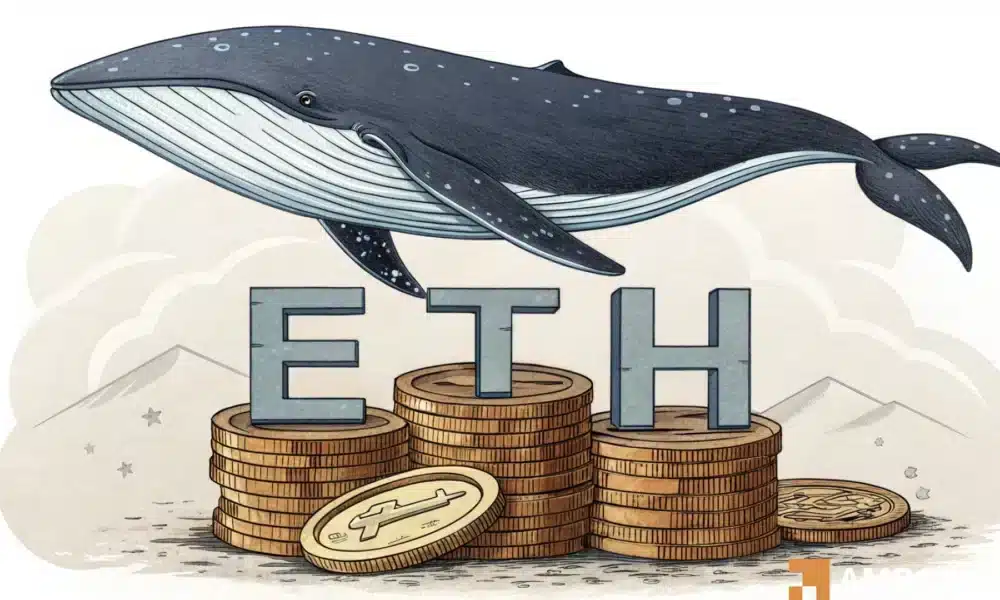Ethereum’s DeFi Challenges: The Impact of a Major Withdrawal
Ethereum’s decentralized finance (DeFi) landscape recently experienced significant strain, primarily due to a dramatic $600 million withdrawal from the Aave protocol, one of its core liquidity hubs. This event not only spiked borrowing rates but also revealed underlying vulnerabilities within Ethereum’s DeFi stack. Understanding the implications of this incident requires a close examination of the ecosystem’s dynamics and how major movements can disrupt liquidity and market sentiment.
The Nature of the Withdrawal
The withdrawal spearheaded by crypto entrepreneur Justin Sun drained essential liquidity from Aave, which significantly influenced borrowing costs. Aave operates as a decentralized lending platform where users can borrow and lend assets, relying heavily on stable liquidity to balance borrowing and lending rates. Following the withdrawal, Ethereum’s variable borrow rates skyrocketed to over 10.06%. This spike led to increased borrowing costs for users, especially affecting those who engage in leveraged strategies known as "looping."
Understanding Leveraged Looping
Leveraged looping is a popular yield-enhancing strategy in the DeFi space. It involves staking Ether (ETH) to earn staked Ether (stETH), using this stETH as collateral to borrow more ETH, and repeating the process to maximize staking yields. Typically, low borrowing rates make this strategy profitable. However, the sudden spike in borrowing costs made it unfeasible for many, forcing loopers to unwind their positions. This created a cascading effect in the market: as loopers sold stETH to cover their positions, the price of stETH fell below that of Ethereum itself.
Market Dynamics and Sentiment
The effect of the withdrawal went beyond just stETH; it negatively influenced the broader Ethereum market. The liquidity shock caused a thinning market, where decreased liquidity led to increased slippage and higher volatility. As loopers dumped stETH, the downward price pressure bled into ETH, causing a significant correction from its peak, which had seen a rally of approximately 50% in the preceding month. The market dynamics experienced were a classic case of overheating combined with over-leveraging, leading to a pullback that many analysts described as a "healthy reset."
Consequences for Investors
As the market adjusted to these new dynamics, open interest in Ethereum plunged, with about $150 million in long liquidations occurring just as ETH was nearing its peak price of around $2,860. While this scenario did not culminate in an outright market crash, it certainly introduced friction, putting a damper on Ethereum’s bullish momentum. The incident serves as a cautionary tale for investors navigating the complexities of the DeFi ecosystem, illustrating how interconnected the various components are and how one significant event can disrupt the entire system.
The Fragile Nature of DeFi
One of the most alarming takeaways from this incident is the apparent fragility of Ethereum’s DeFi infrastructure. Many investors perceive DeFi to be decentralized and resilient, but the turbulence triggered by a single whale exit revealed otherwise. The event exposed that even with a large user base and innovative mechanisms, the system remains vulnerable to shocks. Liquidity crises can emerge rapidly, and the interplay between various protocols can lead to unexpected outcomes.
Looking Ahead
Going forward, this incident highlights the need for greater robustness in the DeFi space. Stakeholders must consider ways to enhance liquidity buffers and mitigate risks related to concentrated withdrawals. For investors, it’s crucial to remain vigilant and develop an understanding of the potential ripple effects when participating in DeFi. While the complexities of these systems can offer lucrative opportunities, they also come with inherent risks that can lead to significant losses in times of market stress. As Ethereum and its DeFi components evolve, building a more resilient infrastructure will be essential for maintaining trust and fostering sustainable growth in the ecosystem.
In summary, while Ethereum’s recent price correction can resemble a natural market behavior, the underlying structural risks unveiled by the whale withdrawal serve as a reminder of the fragility that exists in decentralized finance. Understanding and addressing these vulnerabilities will be pivotal as the DeFi paradigm continues to gain traction in the crypto space.


